Prevent your damaged tree from dying and causing catastrophic damages when it falls on your property. Knowing what to do when your tree is damaged, you can take action to help it recover and thrive.
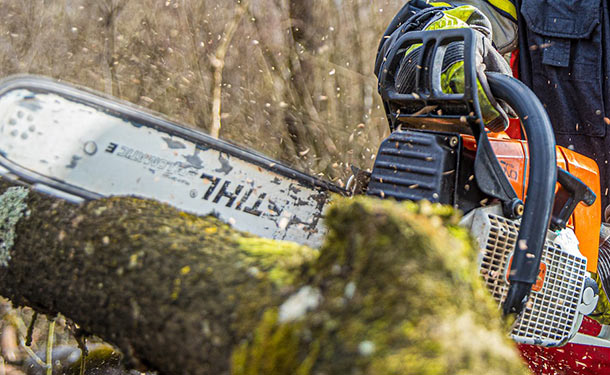
thetreecareguide.com gathered information on recognizing tree damage, when and how to treat it, how to decide when the tree is a keeper or a loss, and how to prevent your tree from suffering damages in the first place.
Tree Damage
Trees grow and mature, completely exposed to natural and manmade perils. The following are a few examples of tree damages:
Mechanical Damage – Mechanical tree damage occurs when lawn care or other equipment nicks, scrapes, cracks, or strips tree bark from the trunk, surface roots, or branches.
Treatment: This type of damage creates a vector(s) for infestation or disease. Promptly clean the wound (use a sharp knife to trim the wound). You can apply a tree dressing or allow the wound to seal itself.
Prevention: You can keep lawnmowers and other equipment from getting too close to the tree by erecting a small fence, planting a garden around the trunk, or mulching the area around the trunk out to the drip line of the tree.
Tip: Encourage surface roots to grow deep by deep watering the tree once per week. For mature trees with surface roots, raising the soil level to cover them will keep them out of harm’s way.
Projectile Damage – Whether it be an out of control vehicle or your front yard’s roaming gnome swept up in a storm, tree trunks and branches can be severely damaged by objects ramming into them.
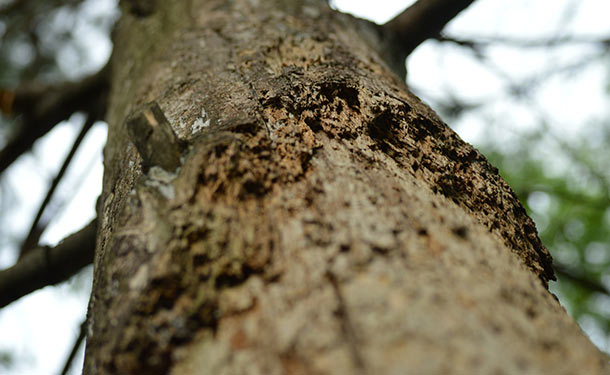
Treatment: Bark damage to a tree trunk can be treated by wrapping the bark in place or cleaning the wound, allowing it to seal and compartmentalize the damaged area. Damages to branches may require pruning them back behind the wounded area or all the way to the trunk.
Prevention: We can’t stop vehicles and other projectiles we do not control. However, unsecured items left in your yard can be carried by wind and stormwater: secure yard tools and decor in a shed, garage, or enclosed porch or patio.
Lightning Strikes – Lightning can obliterate a tree and sometimes cause it to explode. When lightning strikes a tree, its internal temperature rises, and pressure increases in a way that vaporizes most or all of the water contained within the tree, causing partial or total hydraulic failure.
Treatment: Tree recovery from a lightning strike (if it recovers at all) can be a prolonged process that should be accompanied by an arborist. Extensive pruning may be required if any of the tree is to be saved.
Prevention: If your area is prone to electrical storms and/or lightning strikes, install lightning rods to divert or direct lightning away from your trees. Seasonal pruning, including crown thinning, will help make your trees smaller targets.
For more information about tree lightning strikes, read thetreecareguide.com/saving-tree-struck-by-lightning/
Severe Weather Damage – When severe weather systems move through your area, they can bring heavy rains (saturating the soil) and sustained, damaging wind. Such weather can cause:
- Windthrow (when a tree is blown down, uprooting it)
- Windsnap (when a tree breaks into two parts)
- Branch loss
- Stripped foliage
- Stripped bark (hurricane-force winds)
- Soil erosion
- Root plate destabilization (standing floodwater)
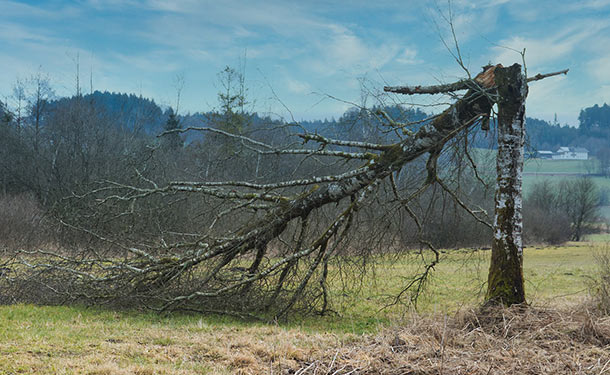
Multiple storms can exacerbate these poor conditions, causing the failure of great quantities of trees.
Treatment: Damaged trees should be evaluated and treated by an arborist. If a tree has fallen, lost a majority of its crown, or sustained girdling bark loss/damage, have the tree removed.
Prevention: Reduce your tree’s resistance by practicing seasonal pruning, including crown thinning and crown raising. Consider hedges, sheds, shrubbery, and other fixed structures placed around the tree to act as a wind block or diversion. Promote vigorous growth, above and below ground by:
- Watering
- Fertilizing
- Mulching
- Pruning
- Seasonal arborist inspections
Note: Trees planted and grown in their hardiness zone are more likely to thrive and strengthen as they mature. Such trees are less likely to suffer severe weather damage.
Find more information about trees toppling from severe weather at thetreecareguide.com/why-some-trees-topple-in-storms-while-others-dont/
Poor Pruning Practices – When trees are incorrectly pruned, they can develop rot from water and moisture collecting on and around bad cuts. When the branch collar is wounded, the tree’s natural compartmentalization process can fail, allowing successful disease and insect attacks.
Treatment: When your tree is left poorly pruned, perform corrective pruning where possible and monitor areas that have been damaged for signs of disease or rot.

Prevention: Correctly prune your tree or leave it to an experienced professional. Consider the following pruning tips:
- Use sharp sanitized equipment
- All cuts should be clean (no rough or jagged cuts)
- Avoid tree paint to cover cuts (the tree will react to a proper cut by closing its wound off)
- Larger branches form a “collar” (cut just outside the collar without damaging it or leaving a protruding stub)
- If the limb or branch has not formed a collar, cut it back, close to the trunk
- When shortening a smaller branch, locate a lateral bud or developed lateral branch, growing in an outward direction. Make a clean cut at a 45° angle with the base of the cut a quarter of an inch past the bud or branch.
Read more about pruning practices at thetreecareguide.com/tree-pruning-purpose-techniques-safety/
Infestation Damage – When insects, especially boring insects, successfully attack a tree, they can cause multiple wounds all over it. Boring insects, in particular, burrow beneath the bark creating larval galleries, interrupting the flow of water and nutrients from the crown and roots.
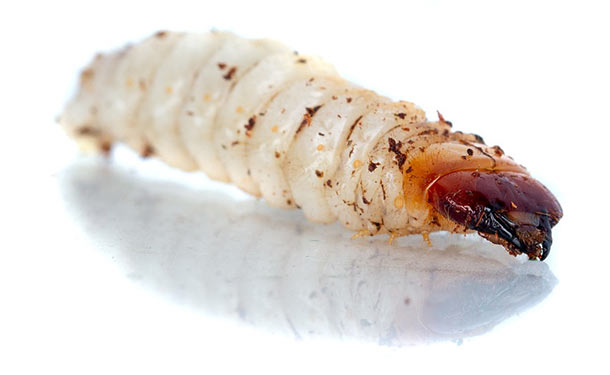
When these insects emerge as adults, they will typically consume the host tree’s foliage before mating and laying eggs on the bark to re-infest the tree. This insect activity can quickly girdle and kill the tree.
Treatment: When insects like aphids and scale infest a tree, topical sprays like neem oil can be applied to stop an infestation. When boring insects have successfully attacked your tree, hire an arborist to evaluate and professionally treat your tree. Some boring insect infestations will require the removal of your tree to protect others in the landscape.
Prevention: You can prevent an insect infestation by liberally applying insect deterrents like neem oil, homemade insect repellants, store-bought insecticides, etc.
Read more about tree pests at thetreecareguide.com/pest-prevention-treatment-tips/
Disease Damage – Diseases can infect a tree via insect infestations, contaminated pruning equipment, wounds from storms, bad pruning cuts, and even splashing water. Diseases may appear on tree foliage as darkened spots, wilting, or chlorosis. Twigs, branches, and the trunk may develop cankers. And when disease infects tree roots, root rot can rapidly develop.
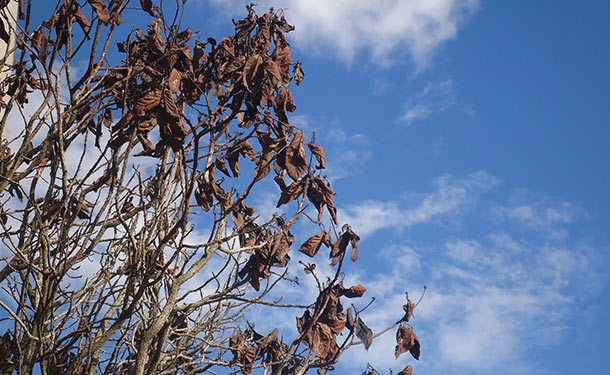
Treatment: Diseases that attack tree foliage and bark surfaces can be effectively treated with topical fungicides like “liquid copper,” a bleach/water solution, a vinegar/water solution, commercial fungicides, and fungicidal soap.
Diseases that attack a tree’s vascular system may require extensive pruning, injections, and ultimately removal. When you suspect this type of disease, hire an arborist to evaluate the infection’s gravity and what can be done to save the tree.
Prevention: The following will help you keep your tree disease-free:
- Sanitize all equipment before working on your tree
- Avoid overhead or splashing water when irrigating your yard or tree
- Promote vigorous growth
- Properly prune your tree during its dormancy
- Treat your tree to avoid insect infestations (they can carry disease to your tree)
- Use a commercial or natural fungicide occasionally to prevent infection
- Immediately treat other trees and shrubs when infected or infested
Can Your Tree Be Saved
When trying to determine what to do with a damaged tree, the following questions will help you make an informed decision on what to do:
- Is your tree leaning? (if yes, get immediate help)
- Did your tree lose its major limbs or leader?
- Did your tree lose more than 50% of its crown?
- Has the tree been girdled?
If you answered yes to any of the above, it is likely time to have your tree removed. Consider the following:
- If your tree is young, it may recover with professional help
- Cabling may secure your leaning tree long enough for it to reestablish
Always request an evaluation of any tree that you want removed. An arborist or professional tree service may have alternative treatments and techniques for saving a tree.
How to Prevent Tree Damage
In this article, you discovered essential information about tree damages, what treatments you can use to help them recover, tree damage prevention methods, and how to determine when your tree must go.
When your tree suffers damage, your swift action can help it recover from its injuries and continue growing vigorously.
Ignoring damages to your tree can lead to its sudden death and catastrophic personal or property damage when it unexpectedly falls.
Sources:
texashelp.tamu.edu/browse/by-type/naturally-occurring/severe-weather/trees/
mortonarb.org/trees-plants/tree-and-plant-advice/horticulture-care/trunk-wounds-and-decay
static.colostate.edu/client-files/csfs/pdfs/FINAL_Storm_Damage_Quick_Guide.pdf
extension.purdue.edu/extmedia/fnr/fnr-492-w.pdf